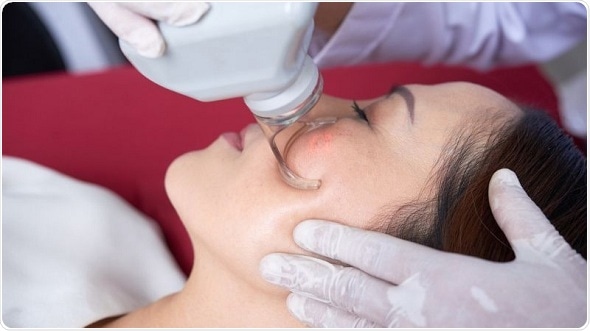Want to smooth out your wrinkles, erase scars and sunspots, and look years younger? Millions of Americans a year turn to lasers and prescription drugs to rejuvenate their skin, but exactly how that rejuvenation works has never been fully explained. Now, Johns Hopkins researchers have discovered that laser treatments and the drug retinoic acid share a common molecular pathway. Moreover, that pathway — which lets skin cells sense loose RNA molecules — is also turned up in mice when they regenerate hair follicles. Results are described in the June 26 issue of Nature Communications.

Credit: Getty images
Understanding the biology behind how cellular damage can lead to this type of regeneration can harness a new generation of therapeutics”
Luis Garza, M.D., Ph.D., associate professor of dermatology at the Johns Hopkins University School of Medicine
Researchers have known for decades that mice — unlike humans — can regenerate hair follicles after a deep wound. Recent studies by Garza and others found that loose pieces of RNA, called self-noncoding double-stranded RNA (dsRNA) can spur this regeneration. They hypothesize that this may be because dsRNA is released by damaged cells at the site of a wound. Garza and his colleagues were curious whether dsRNA also played a role in skin rejuvenation treatments such as laser therapy, microneedling and facial abrasion, which all involve temporary damage to skin cells. Although these treatments are well-established among dermatologists, researchers haven’t been clear why they work.
The team collected biopsies from 17 patients being treated at The Johns Hopkins Hospital with conventional laser skin rejuvenation to electively erase sunspots and wrinkles. All patients were Caucasian women with an average age of 55, and treatments were performed on their faces and arms. Skin biopsies were collected before the laser treatment and one week after the procedure.
Garza and his colleagues analyzed the expression levels of genes in each sample and discovered that genes involved in sensing dsRNA as well as genes involved in producing the skin’s natural retinoic acid were all expressed at higher levels after the laser treatment. Next, the researchers treated isolated human skin cells with loose dsRNA — mimicking the effect of the laser treatment. The amount of retinoic acid inside the cells increased by more than tenfold. Commercially produced retinoic acid is already used to treat acne, wrinkles and sunspots.
It’s not an accident that laser rejuvenation and retinoic acid have both been successful treatments for premature aging of the skin from sun damage and other forms of exposure. They’re actually working in the same molecular pathways and nobody knew that until now.”
Luis Garza
To further strengthen and understand the connection, the researchers turned back to mice. They knew that in both mice and humans, a protein called toll-like receptor 3 (TLR3) senses dsRNA. When Garza’s group engineered mice to lack TLR3, the animals could no longer regenerate hair follicles after a wound. But when the researchers gave these mice retinoic acid, they regained the ability to regenerate the follicles. The results point toward a pathway involving TLR3 that senses double-stranded RNA and turns up the synthesis of retinoic acid.
“In retrospect, it makes a lot of sense because retinoic acid is already a mainstay of wrinkle reduction and nobody knew what turned it on,” says Garza. “Now we know that damage leads to dsRNA, which leads to TLR3 activation and retinoic acid synthesis.”
The findings could lead to novel strategies to reduce wrinkles and sunspots by combining retinoic acid and laser treatments in new ways, Garza says. And they could also lead to ways to regenerate hair follicles, as mice do when there’s an increase in dsRNA after a wound.
“After a burn, humans don’t regenerate structures like hair follicles and sweat glands that used to be there,” says Garza. “It’s possible in light of these new findings that double-stranded RNA may be able to improve the appearance of burn scars.”
Source:
Journal reference:
Kim, D. et al. (2019) Noncoding dsRNA induces retinoic acid synthesis to stimulate hair follicle regeneration via TLR3. Nature Communications. doi.org/10.1038/s41467-019-10811-y.